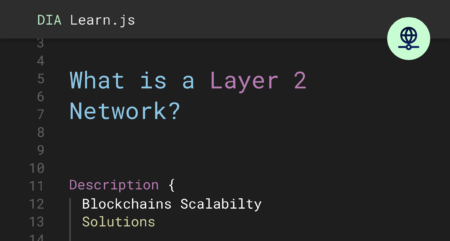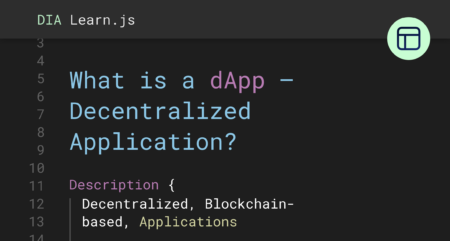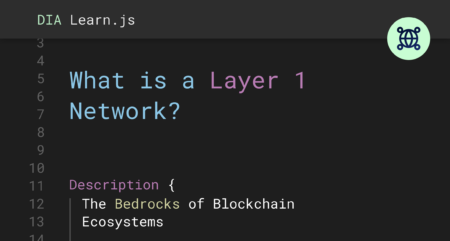What is a Smart Contract: Types and Examples
Smart contracts are a revolutionary component of the blockchain world. They’re essentially self-executing contracts where the terms between buyer and seller are written into lines of code.

What is a smart contract and how does it work?
Smart contracts are a revolutionary component of the blockchain world. They’re essentially self-executing contracts where the terms between buyer and seller are written into lines of code. These contracts live on a blockchain, which means they’re decentralized and can be executed without intermediaries.
Key Features of Smart Contracts:
- Decentralization: Unlike traditional contracts, there’s no need for middlemen.
- Transparency: Details of the contract are visible to all parties on the blockchain.
- Immutability: Once deployed, the code of the contract cannot be changed.
- Security: Blockchain’s encryption makes them highly secure.
How do they work? Imagine setting an alarm; it’s programmed to ring at 7 am. Similarly, a smart contract performs actions when predetermined conditions are met. If event X happens, the contract ensures that event Y occurs.
One practical example is in crowdfunding. Instead of using a platform that takes fees, a smart contract can be set up to collect contributions. If a funding goal is met, the money goes to the project owner. If not, it’s returned to the donors.
Advantages:
| Pros of Smart Contracts | Description |
|---|---|
| Trust | Data is encrypted and stored on a public ledger. |
| Savings | Intermediaries like notaries are rendered unnecessary. |
| Backup | Since it’s on a blockchain, it’s duplicated many times over. |
| Safety | Blockchain’s cryptography offers top-notch security. |
| Speed | Manual processing times are eliminated. |
Challenges:
However, smart contracts are not without challenges. Errors in code can lead to unintended consequences, and since contracts are immutable, these errors cannot be easily fixed. There’s also a learning curve for developers and users alike. Yet, the potential benefits in efficiency, transparency, and security are immense.
How are smart contracts different from traditional contracts?
Traditional contracts and smart contracts serve the same fundamental purpose: they both outline and enforce specific terms of an agreement between parties. However, their mechanisms and attributes make them distinct from one another.
- Form: Traditional contracts are usually written in natural language, while smart contracts are written in code.
- Execution: Traditional contracts require manual execution and oversight. Smart contracts, once deployed on a blockchain, execute actions automatically when conditions are met.
- Intermediaries: Traditional contracts often require third parties like notaries, banks, or legal representatives to ensure enforcement. Smart contracts function without intermediaries.
- Transparency and Privacy: Smart contracts provide more transparency since they’re on a public ledger. However, this can sometimes conflict with privacy concerns.
- Speed and Efficiency: Smart contracts, being automated, can typically process terms faster than manual traditional contracts.
- Immutability: Once a smart contract is deployed, its code can’t be changed, unlike traditional contracts which can be modified with mutual agreement.
- Global Reach: Smart contracts on public blockchains can be accessed from anywhere in the world, providing a global platform for agreements.
- Costs: While drafting a traditional contract might involve legal fees, smart contracts might require payment in the form of cryptocurrency to cover network fees.
- Legal Recognition: Traditional contracts have established legal frameworks in most jurisdictions. Smart contracts are still navigating complex legal waters.
- Error Handling: Mistakes in traditional contracts can sometimes be rectified through mutual agreement or legal processes. In contrast, errors in smart contract code can lead to irreversible consequences due to their immutable nature.
Despite these differences, it’s essential to understand that both types of contracts have their place in the modern world. The choice between them will depend on the specific needs and context of the agreement being made.
What platforms support smart contracts?
The emergence of blockchain technology has paved the way for various platforms that support smart contract development and deployment. Each platform has its unique features, capabilities, and community.
- Ethereum: Often referred to as the pioneer platform for smart contracts, Ethereum introduced the world to programmable contracts with its Solidity language. It’s the most widely used platform for DApps and smart contract deployment.
- Binance Smart Chain: An alternative to Ethereum, the BNB Chain offers a faster and cheaper platform for smart contract execution. It’s compatible with Ethereum’s EVM, which makes it easier for developers to shift or duplicate their projects.
- Tron: Initially an ERC-20 token on Ethereum, Tron later developed its own mainnet. It’s known for its high throughput and aims to build a decentralized internet.
- Polkadot: Designed to connect multiple blockchains into one unified network, Polkadot allows inter-blockchain transfers of any type of data or asset, not just tokens.
- Polygon: It’s a Layer-2 scaling solution and efficient cross-chain that simplifies the building of Ethereum blockchain applications, offering an improved user experience
- Arbitrum: It’s a Layer-2 scaling solution built on Ethereum, focusing on reducing costs and latency for decentralized applications, famous for its vibrant DeFi ecosystem.
Comparison Table:
| Platform | Primary Language | Notable Feature |
|---|---|---|
| Ethereum | Solidity | Pioneer in smart contracts |
| BSC | Solidity | Cost-effective and fast |
| Tron | Solidity | High throughput |
| Polkadot | Substrate | Inter-blockchain connectivity |
| Polygon | Solidity | Broad developer toolkit |
| Arbitrum | Solidity | Optimistic rollup technology |
Each platform has its strengths and weaknesses, and the choice often boils down to the specific needs of the project, the familiarity of developers with the platform, and the target audience.
What are the primary use cases for smart contracts?
Smart contracts have revolutionized the way we think about contractual agreements. With their unique features, they have found applications across various sectors.
- Financial Services: Smart contracts can automate complex financial processes, facilitate loans, manage derivatives, and execute peer-to-peer transactions without the need for intermediaries.
- Supply Chain Management: Through smart contracts, every step of the supply chain can be automated and verified, from procurement of raw materials to the delivery of the end product.
- Real Estate: Property sale and rental processes can be streamlined using smart contracts. They can handle everything from payment to the transfer of property deeds.
- Voting Systems: To ensure transparency and prevent fraud, smart contracts can be used in voting mechanisms, both in public elections and corporate decision-making.
- Healthcare: Patient data can be stored securely on a blockchain and, through smart contracts, can be accessed by authorized personnel when necessary.
- Entertainment: Royalty distribution for artists can be automated using smart contracts, ensuring that artists receive their due share from sales and streams.
- Insurance: Claim processing can be automated using smart contracts. In case of an event (like a flight delay), the contract can automatically release funds to the insured party.
- Identity Verification: Smart contracts can store identity information and provide access to authorized parties, making identity verification seamless.
- Decentralized Autonomous Organizations (DAOs): These are entities that operate based on predefined rules encoded as smart contracts. DAOs can take decisions, manage funds, and operate without centralized control.
- Gaming: In-game assets can be tokenized and traded on blockchain platforms using smart contracts, adding real-world value to virtual assets.
Use Cases in Tabular Form:
| Sector | Use Case |
|---|---|
| Financial Services | Automate financial transactions |
| Supply Chain | Track and verify products through the supply chain |
| Real Estate | Streamline property transactions |
| Voting | Ensure transparent and fraud-free elections |
| Healthcare | Securely store and access patient data |
| Entertainment | Automate royalty distributions |
| Insurance | Automate claim processing |
| Identity | Facilitate seamless identity verification |
| DAOs | Operate organizations based on encoded rules |
| Gaming | Tokenize and trade in-game assets |
The versatility of smart contracts is evident from their wide range of applications. As the technology matures, we can expect even more innovative use cases to emerge.
How do smart contracts interact with external data?
Smart contracts, inherently, are isolated from the external world. They cannot directly access or fetch external data such as weather conditions, stock prices, or even the current time. This is to maintain the deterministic nature of the blockchain, where every node must arrive at the same result. Yet, many applications of smart contracts require real-world data. So, how is this achieved?
Introducing Blockchain Oracles
Oracles are third-party services that provide smart contracts with external information. They act as bridges between the blockchain and the external world. An oracle can be a software or hardware entity, or even another smart contract.
There are various types of oracles, each serving a unique purpose:
- Price Feed Oracle: Decentralized finance (DeFi) platforms use price oracles to obtain real-time market price cryptocurrencies and use them to execute smart contract transactions in lending and borrowing, opton.
- Randomness oracle: Gaming Finance (GameFi) protocols use randomly generated numbers on-chain to power lotteries, prediction markets, NFT launches and other on-chain use cases.
- Weather-based Smart Contract: A crop insurance smart contract that pays out if there’s no rain for 30 days might rely on a weather oracle for accurate data.
Popular Oracle Platforms:
| Platform | Features |
|---|---|
| Chainlink | Cainlink is a blockchain oracle network. The network is intended to be used to facilitate the transfer of tamper-proof data from off-chain sources to on-chain smart contracts. |
| Band Protocol | Band Protocol is a cross-chain data oracle platform with the aspiration to build high-quality suites of web3 development products. |
| DIA | DIA is a cross-chain data and oracle platform, specializing in the sourcing and delivery of fully transparent, customizable, and resilient data feeds, setting a new paradigm for oracles. |
| Pyth | Pyth Network is an oracle that publishes financial market data to multiple blockchains. Pyth market data is contributed by over 80 3rd-party publishers. |
What is the cost associated with executing a smart contract?
Executing a smart contract on a blockchain usually incurs a cost. This cost is associated with compensating the network participants who validate and record the contract’s execution on the blockchain. But what determines this cost and how can one estimate it?
- Gas and Fees: On platforms like Ethereum, the cost associated with executing a smart contract is termed ‘gas’. Gas is a unit that measures the amount of computational effort required to execute operations.
- Factors Affecting Cost: Several factors determine the gas required for a contract:
- Complexity: More complex contracts, with loops or large data storage, require more gas.
- Data Storage: Storing data on the blockchain is one of the most gas-intensive operations.
- Contract Calls: Invoking other contracts or making external calls can increase the gas cost.
- Network Congestion: When many users are transacting, the demand for gas increases, leading to higher gas prices.
- Gas Price: Users can specify the gas price they are willing to pay for their transaction. Miners usually prioritize transactions offering higher gas prices.
- Gas Limit: It’s the maximum amount of gas users are willing to spend on a transaction. If a contract execution requires more gas than the limit, the transaction fails.
- Estimation Tools: Platforms offer tools to estimate the gas required for a particular contract. For instance, Ethereum’s Remix IDE provides gas estimations for contract deployment and function calls.
- Refunds: Certain operations, like freeing up storage or self-destructing a contract, can result in gas refunds. However, there’s a limit to the amount of gas that can be refunded in a transaction.
- Optimization: Developers should optimize contract code to reduce gas consumption. This involves simplifying logic, reducing storage, and reusing code when possible.
- Fee Markets: As the demand for block space varies, a market for fees can develop. Users can bid for quicker transaction confirmations by offering higher fees.
- Future Developments: Ethereum’s transition to Ethereum 2.0 and the introduction of technologies like Rollups might significantly impact the cost dynamics of executing contracts.
Gas Costs for Common Operations:
| Operation | Average Gas Cost |
|---|---|
| Simple Transfer | 21,000 gas |
| Contract Creation | >100,000 gas |
| Smart Contract Call | Varies |
| Storing Data | High |
Understanding the cost dynamics is essential for both developers and users. It ensures efficient contract execution without overpaying while keeping the network secure.
How do smart contracts handle confidentiality and privacy?
Confidentiality and privacy are significant concerns in the blockchain world, especially considering the transparent nature of most blockchain systems. Smart contracts, by default, execute on public blockchains where all transactions are visible to anyone. However, certain mechanisms and techniques can enhance smart contract privacy:
- Public vs. Private Blockchains: One of the most straightforward solutions to privacy concerns is to execute smart contracts on private or permissioned blockchains. These are restricted to specific participants, making transactions visible only to authorized entities.
- Zero-Knowledge Proofs (ZKPs): This is a cryptographic method that allows one party to prove to another that a statement is true without revealing any specific information about the statement itself. ZKPs, especially zk-SNARKs and zk-STARKs, can be integrated into smart contracts to validate transactions without revealing transaction details.
- Ring Signatures: Popularized by cryptocurrencies like Monero, ring signatures allow transactions to be signed by a group. Anyone in the group could be the signer, adding a layer of anonymity.
- State Channels: State channels allow multiple transactions to be performed off-chain and then settled on-chain in a single transaction. This not only improves scalability but also ensures that intermediate states remain private.
- Homomorphic Encryption: This allows computations on encrypted data without first needing to decrypt it. A smart contract can process and verify transactions without directly accessing the data itself.
- Mixers: Mixers or tumblers pool a group of transactions and mix them before sending them to their final destinations. This obfuscates the relationship between senders and receivers.
- Oracles for Privacy: Oracles can be used to fetch and verify off-chain confidential data without ever exposing the data on-chain.
- Private Data Collections: Some platforms, like Hyperledger Fabric, support private data collections, where a subset of nodes in the network can maintain private data that’s not shared with all participants.
- Proxy Re-encryption: This cryptographic method allows a third party to transform data encrypted for one party into being encrypted for another, without access to the underlying plaintext or decryption keys.
- Consistent Protocol Upgrades: As privacy technologies evolve, blockchain platforms can integrate these advancements through protocol upgrades.
Comparative Privacy Features:
| Feature | Description | Use Case |
|---|---|---|
| Zero-Knowledge Proofs | Prove a statement is true without revealing details. | Confidential transactions |
| Homomorphic Encryption | Compute on encrypted data directly. | Privacy-preserving smart contract logic |
| Ring Signatures | Add anonymity among a group of signers. | Anonymous transactions |
| State Channels | Off-chain transactions with on-chain settlements. | Scalable & private microtransactions |
It’s worth noting that achieving perfect confidentiality and privacy is challenging. Depending on the use case and platform, a combination of the above strategies may be employed. Always be mindful of regulatory considerations when implementing privacy features.
Why is scalability an issue with smart contracts?
Scalability has been a longstanding challenge in the world of blockchains and smart contracts. As these systems gain adoption, ensuring they can handle increasing loads without sacrificing security or decentralization is vital.
- Block Size and Frequency: The size of blocks and the frequency at which they’re added to the blockchain can limit the number of transactions processed in a given time frame. This affects how many smart contract interactions can take place.
- Network Latency: Every transaction or contract execution needs validation by network nodes. As the number of nodes increases, so does the time required for network-wide consensus.
- Data Storage: Every smart contract operation that changes data requires storage on the blockchain. As the chain grows, so does the storage and synchronization demand.
- Gas Limit: On Ethereum, each block has a gas limit, which restricts how many operations (like contract executions) can be included in one block.
- State Bloat: As more applications deploy smart contracts and store data, the overall “state” of the blockchain can grow, leading to performance and synchronization issues.
- Sharding: This is a potential solution where the blockchain splits into multiple chains (or “shards”) that run in parallel. Each shard handles a fraction of the total transactions, increasing overall capacity.
- Layer 2 Solutions: These are secondary protocols or networks that sit atop the main blockchain. Examples include Arbitrum or Base, and rollups. They handle transactions off-chain before settling them on the main chain.
- Alternative Consensus Mechanisms: Proof-of-Stake, Delegated Proof-of-Stake, and Byzantine Fault Tolerance are consensus mechanisms that aim to improve scalability without compromising security.
- Cross-Chain Interactions: Interoperability solutions allow multiple blockchains to communicate, potentially distributing the load among them.
Comparison of Scalability Solutions:
| Solution | Description | Advantages |
|---|---|---|
| Sharding | Splitting the blockchain into parallel chains. | Increases capacity without creating new blockchains. |
| State Channels | Off-chain transaction pathways with on-chain settlements. | Fast, low-cost transactions. Private intermediates. |
| Rollups | Bundle multiple transactions into a single on-chain update. | Increases throughput and reduces fees. |
| Cross-Chain | Linking multiple blockchains for communication. | Distribute load and utilize strengths of various chains. |
While scalability challenges persist, the blockchain community’s relentless innovation gives hope for sustainable and efficient solutions in the future.
How do smart contracts handle disputes and errors?
The immutable nature of blockchains ensures that once a smart contract is deployed or a transaction is confirmed, it cannot be altered. This feature is both a strength and a potential pitfall, especially when it comes to disputes and errors. Let’s delve into the ways the blockchain ecosystem handles these challenges.
- Code is Law: Originally, the principle of “code is law” governed smart contracts. This means that the contract’s code, once deployed, should be final and unchangeable, even if it contains errors or vulnerabilities. However, this purist stance has been challenged due to high-profile incidents like the Ethereum DAO hack.
- Human Intervention: One solution to errors is to introduce mechanisms for human intervention. Contracts can be designed with “escape hatches” or “pause buttons” that allow designated administrators to halt the contract or amend certain parameters.
- Upgradable Contracts: Through the use of proxy contracts and delegate calls, developers can design contracts that point to the logic stored in another contract. If the logic needs updating, the reference can be changed without altering the main contract.
- Formal Verification: This is a process where contract code is mathematically proven to behave as intended. While this doesn’t guarantee the absence of bugs, it significantly reduces the risk of unintended behavior.
- Multi-Sig Approvals: For critical actions, contracts can require multiple signatures or approvals. This means that multiple parties (e.g., 3 out of 5) must agree before a particular function is executed.
- Contract Audits: Before deploying, contracts should be audited by professionals. They review the code for vulnerabilities, logic errors, and potential pitfalls.
- Dispute Resolution Layers: Some platforms introduce external dispute resolution systems, like Kleros or Aragon Court. They allow human jurors to vote on disputes related to contract outcomes.
- Forks: In extreme cases, if a contract error or vulnerability affects the broader network, the community might opt for a blockchain fork. This was the case with Ethereum’s response to the DAO hack, resulting in Ethereum and Ethereum Classic.
- Testnets: Before deploying on the main network, contracts should be tested on a testnet, which is a replica of the main blockchain environment but without real-value transactions.
- Error Reporting Mechanisms: Some platforms and contracts introduce mechanisms to report bugs or vulnerabilities, sometimes even offering bounties for significant findings.
Examples of High-Profile Smart Contract Incidents:
| Incident | Description | Outcome/Response |
|---|---|---|
| The DAO Hack | A vulnerability in The DAO’s contract was exploited to drain funds. | Ethereum underwent a hard fork to return the funds. |
| Parity Wallet Freeze | A user accidentally killed a library contract, freezing millions in Ether. | Funds remain frozen with debates on potential solutions. |
The handling of disputes and errors in smart contracts underscores the importance of balancing decentralization and pragmatism. As the technology matures, the community will likely refine and standardize best practices in this area.
What is the role of programming languages in smart contract development?
Programming languages play a crucial role in the design, functionality, and security of smart contracts. The choice of language can influence the contract’s behavior, efficiency, and vulnerability to bugs.
- Solidity: Developed specifically for the Ethereum platform, Solidity is the most widely used language for Ethereum smart contract development. It’s similar to JavaScript and allows for the creation of complex decentralized applications.
- Vyper: An alternative to Solidity for Ethereum, Vyper aims to be a more secure and simpler language. It intentionally lacks some of the more complex features of Solidity to reduce potential errors.
- Bitcoin Script: Bitcoin’s scripting language is deliberately not Turing-complete, restricting the types of computations and smart contracts it can execute. This limitation enhances security but reduces flexibility.
- RIDE: Designed for the Waves platform, RIDE is a functional language optimized for creating smart contracts and dApps on Waves.
- Scilla: Developed for Zilliqa, Scilla is a language focused on ensuring security through formal verification.
- Rust and C++: Used for EOS smart contract development, these general-purpose languages are familiar to many developers, but their use in smart contract settings requires special attention to security and efficiency.
- Domain-Specific vs. General-Purpose: While domain-specific languages (DSLs) like Solidity or Vyper are tailored for smart contracts, general-purpose languages might be more flexible but demand caution against vulnerabilities.
- Formal Verification: Some languages are designed with formal verification in mind, allowing developers to mathematically prove certain properties of their contracts, reducing the risk of errors.
- Efficiency: Execution efficiency is crucial, especially considering the gas costs associated with contract interactions. The language and its compiler play a role in determining the efficiency of the generated bytecode.
- Learning Curve: Familiarity with the language can speed up development and reduce errors. That’s why popular languages or those similar to mainstream ones can have an advantage in adoption.
Popular Smart Contract Platforms and Their Languages:
| Platform | Primary Language(s) |
|---|---|
| Ethereum | Solidity, Vyper |
| EOS | C++, Rust |
| Waves | RIDE |
| Zilliqa | Scilla |
| Bitcoin | Bitcoin Script |
In conclusion, the choice of programming language is pivotal in smart contract development. It determines not only the capabilities of the contract but also its safety, efficiency, and overall reliability.







